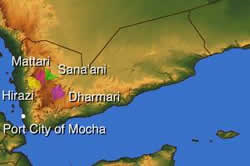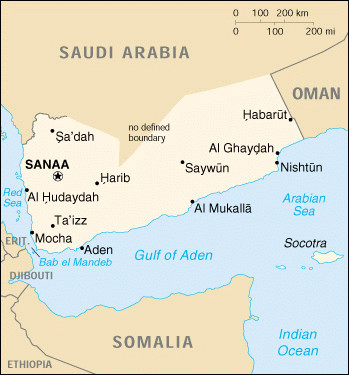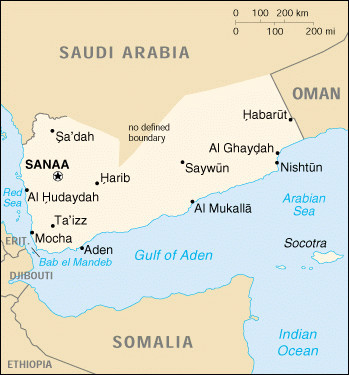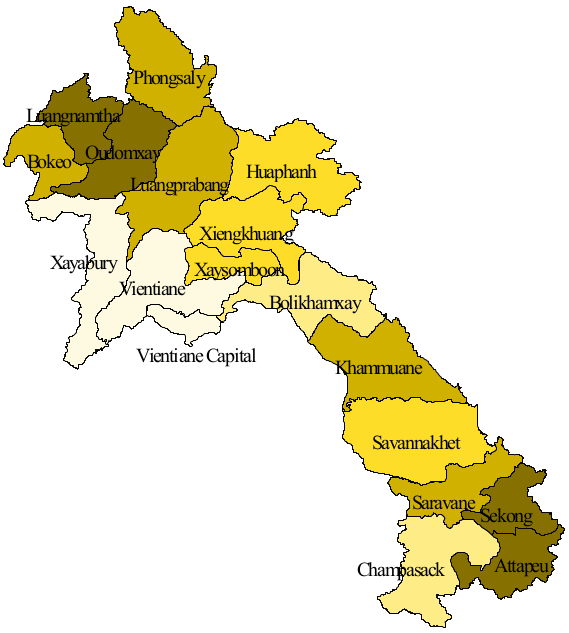The difference between mocha beans, mocha pot and mocha coffee, a brief introduction to Yemen mocha coffee
For professional baristas, please follow the coffee workshop (Wechat official account cafe_style)
The difference between mocha beans, mocha pot and mocha coffee, a brief introduction to Yemen mocha coffee
More than 1500 years ago, coffee trees were introduced to Yemen on the other side of the Red Sea, thus embarking on a world tour of coffee beans. Yemeni coffee is exported from the port of Mocha (now silted and abandoned) to all parts of the world (mainly sold to Europe through Turkey). So Yemeni coffee gets its name from the export port, which is what we often see today as "mocha beans".
Since Yemen was the main exporter of coffee in the world before the European colonial tide, the word "mocha" has been synonymous with coffee for quite a long time.
Due to the ancient manual drying method, the origin "mocha" beans are full of wild flavor, and there is a strong "chocolate flavor" in the afterrhyme, so in Italian coffee, "chocolate coffee" is called "mocha coffee". In fact, "mocha coffee" is just a cappuccino with chocolate sauce.
Country profile
Name: Yemen the Republic of Yemen
Per capita GDP:1500 USD (2013)
Location: located in Asia, south of Arabian Peninsula, bordered by Saudi Arabia (Saudi Arabia) to the north, Oman (Oman) to the northeast, the Red Sea (Red Sea) to the west, and the Gulf of Aden (Gulf of Aden) to the east and south.
General situation of economy and people's livelihood: China has a tropical arid climate, which is not suitable for the growth of food crops. So far, grain is not self-sufficient, and more than half of it depends on imports. However, coffee and cotton are of excellent quality. In addition, oil is the largest export commodity.
A brief History of Coffee
Yemen and Ethiopia are almost synonymous with the history of coffee.
Ethiopia is the birthplace of coffee. Yemeni coffee has a long history. Coffee cultivation has been recorded since 575 AD, and it is recognized as the first country in the world to start agricultural coffee cultivation.
Yemen is the only country in the Arab world that produces coffee, and the first popularity of coffee in the Arab world began in Yemen.
The drinking habit of coffee spread to different regions as businessmen from different places spread, but it was accepted by the world outside its origin on a large scale, starting with the large-scale export of coffee, the earliest of which was the port of Mocha in Yemen.
With the visit of the Dutch, the original small fishing village has grown into a famous port. Al Mahka, which we now call Port Mocha (above Mocha), is a must-see term when it comes to the history of coffee. Today, "mocha", which is familiar to most coffee drinkers, is written in a variety of ways. Mocha, moca, mocca and moka all originated in this unknown place of origin.
Based on the merchant's profit-seeking nature, the Arabs firmly controlled the supply of coffee for a long time, and all coffee beans exported to Europe set off from the port of Mocha. So much so that "mocha" was once regarded as synonymous with coffee.
After European countries acquired the ability to grow coffee in turn in the 17th century, the coffee from the port of Mocha still maintained a fairly high market share. The oldest blend of coffee in the world is Arabica coffee from the island of Java mixed with coffee from the port of Mocha, that is, the famous "Mocha Java Integrated Mocha Java Blend".
In the 18th and 19th centuries, with the rise of coffee producing areas in America and the formation of modern coffee supply pattern, the share of Yemeni coffee in the world supply decreased, but it did not affect its lofty status at all. Scarcity and luxury is the common feeling of many coffee drinkers outside the Arab world.
Although it is located in the Asian continent, in the coffee industry, people are more accustomed to classifying it as "North African system". There is a vivid and interesting analogy. The African continent threw a stone a little far across the Red Sea and the Gulf of Aden, that is, Yemen.

Coffee variety
100% Arabica, with many ancient varieties, today's main coffee producing areas such as Brazil, Central America and the Caribbean, the ancestors of coffee can be traced back to the origin, but they are all the descendants of Yemeni coffee.
Coffee planting
The way coffee is grown in Yemen has not changed much for hundreds of years. Coffee trees still grow on mountain terraces that have witnessed countless seasons, and coffee farmers still use ditches laid out by stones used by their ancestors centuries ago. irrigate coffee trees. Picking and follow-up treatment still follow the ancient method.
Yemeni coffee is mostly grown in high altitude areas, coupled with the dry climate, which has created the hard bean constitution of Yemeni coffee.
Many producing areas are located in remote areas and still use donkeys as a means of transshipment.
In 2006, the Yemeni Ministry of Agriculture estimated that the coffee planting area in the country was about 33260 hectares, producing 17292 tons.
Coffee processing
Dry treatment. It is common for fresh coffee fruits to be dried on the roof. in addition, the older treatment includes branch drying, that is, leaving the coffee fruit on the branch and waiting for it to be naturally dried before picking.
Coffee roasting
Affected by high altitude and dry climate, Yemeni coffee beans are small and hard. Different from raw beans in other producing areas, Yemeni coffee beans can further show rich flavor changes when they go through deep baking, with excellent mellowness and flavor. In addition, for the sake of dry treatment, the color of coffee beans is not uniform after baking.

Main brands of coffee
Most Yemeni coffee is consumed in the Arab world and is the first choice for many Turkish coffee lovers. Most Yemeni coffee is supplied to Gulf countries, including Saudi Arabia and Oman. The high price of Turkish coffee is also partly due to the preference of Arab countries, regardless of the quality, Arab countries will fully accept, who called these countries are well deserved "rich oil".
Coffee markets outside the Arab countries, the most well-known are: Matali Mattari, Sanani Sanani, Ismail Ismaili.
Mattari, known for its classic chocolate flavor, is itself the name of a local coffee variety that produces small, oval coffee beans.
Sanani refers to a mixture of coffee from the surrounding areas of the Yemeni capital Sanna.
Ismaili, the name of the brand, is also the name of a local coffee variety in Yemen. the coffee beans produced are small and similar to round beans.

Important Notice :
前街咖啡 FrontStreet Coffee has moved to new addredd:
FrontStreet Coffee Address: 315,Donghua East Road,GuangZhou
Tel:020 38364473
- Prev

Brief introduction of mocha coffee in Yemen brief history of YemeniCoffee coffee varieties of Yemeni coffee
Professional barista communication Please pay attention to the coffee workshop (Wechat official account cafe_style) more than 1500 years ago, coffee trees were introduced to Yemen on the other side of the Red Sea, thus embarking on a journey of coffee beans around the world. Yemeni coffee is exported from the port of Mocha (now silted and abandoned) to all parts of the world (mainly sold to Europe through Turkey), so Yemeni coffee is named after the port of export.
- Next

Laos Coffee brief History of Coffee cultivation in Laos
Coffee cultivation in Laos has a history of about 100 years. It was originally introduced by the French. Coffee cultivation can be divided into four stages: from 1920 to 1940, the French introduced coffee, operated coffee farms, and local farmers gradually began to grow coffee. From 1940 to 1975, affected by external factors such as war and agricultural disasters, farmers mostly abandoned coffee or switched to Robusta. 1975-1990, developing state-owned enterprises
Related
- How did the Salvadoran coffee industry develop in Central America?
- What exactly does the golden cup extraction of coffee mean?
- The Origin of Coffee flower
- [2023 Starbucks World Earth Day] there are more meaningful things besides free Starbucks coffee!
- What kind of coffee is there in Spain? 9 Flavors of Spanish Coffee
- Aromatic African coffee| Kenya's coffee culture and historical production area
- Liberica Coffee Bean knowledge: the characteristics of Liberian Coffee beans of the three original species of Coffee beans
- The origin and formula of Spanish latte introduces the taste characteristics of Bombon coffee in Valencia, Spain.
- How to adjust the solution of over-extracted coffee
- What is the tasting period of coffee beans? What is the period of coffee and beans? How should coffee wake up and raise beans?

